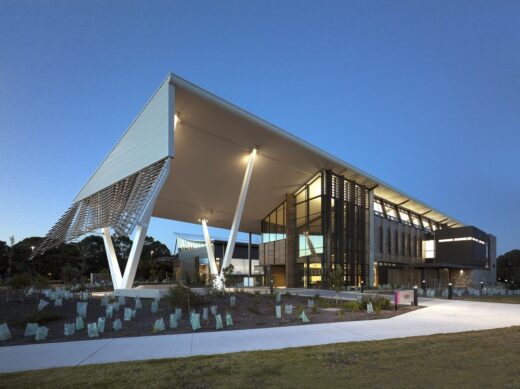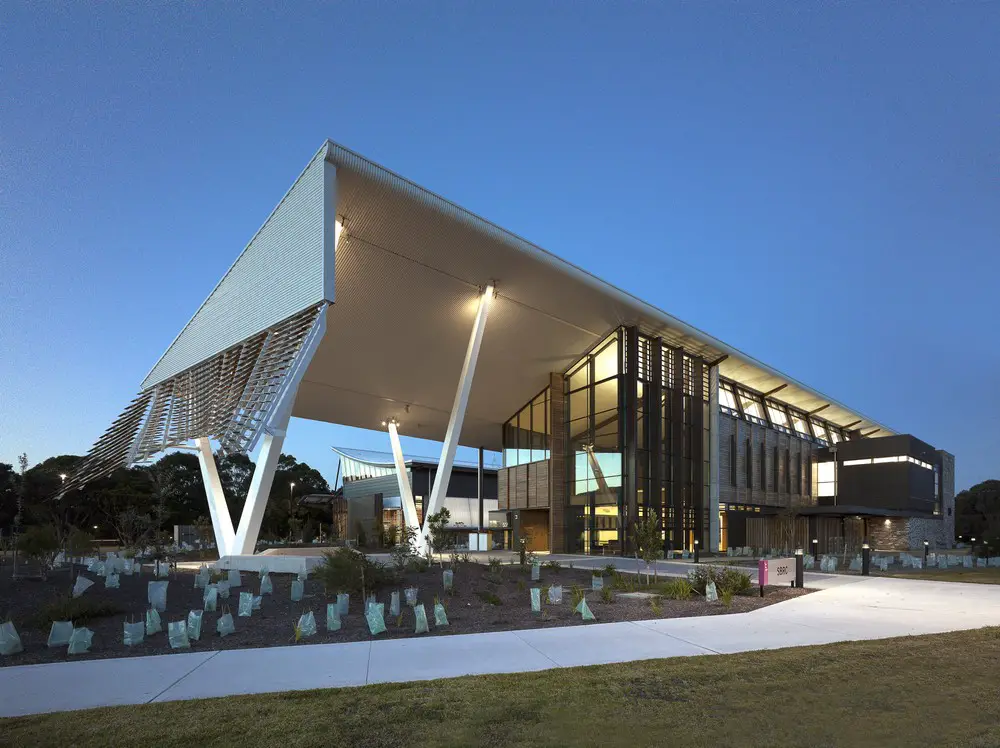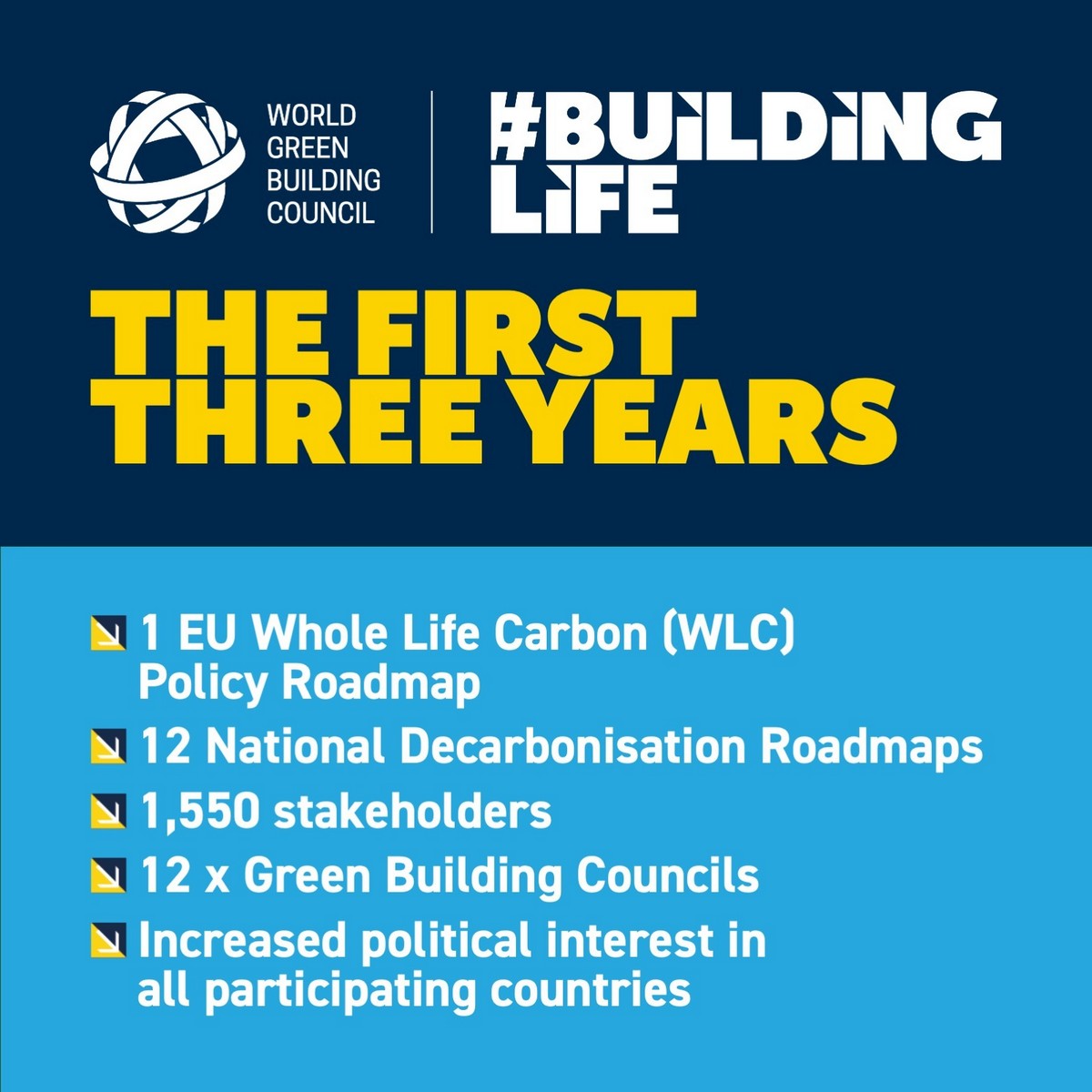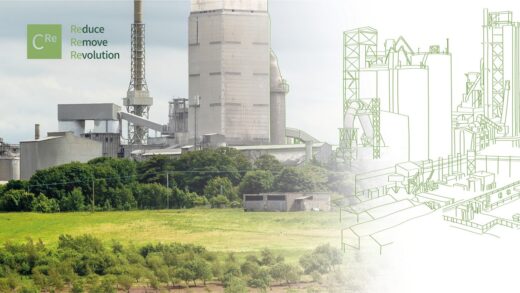Sustainable building news, Nearly zero-energy buildings, COP27 Egypt, NZEB, Sustainability, Green property projects
Sustainable Building News
Green Architecture Developments: Eco Design News – Tackling Climate Change
16 April 2024
EU policymakers must prioritise sustainable building policies
World Green Building Council calls on EU policymakers to take decisive action on the built environment
- The fast-approaching European Elections are proving a ‘make or break’ moment for the building sector.
- Prioritising sustainable built environment policies will address current European Union (EU) issues, such as energy poverty and the unemployment crisis.
- Green Building Councils from over 20 countries across Europe have developed a guide for policymakers.
Sustainable Building News – World Green Building Council Policy
Brussels, 16 April, 2024 – World Green Building Council (WorldGBC), in collaboration with 24 of its European Green Building Council members, have today launched a set of new sustainable building policy recommendations – The European Manifesto for a sustainable built environment. Designed for EU policymakers to implement more robust initiatives and incentives to secure sustainable buildings across the continent, the recommendations come on the back of mounting pressure from the building and construction sector to prioritise sustainable buildings policy ahead of June’s European Elections.
By prioritising sustainable built environment policies, a number of key issues across the EU could be resolved, including energy security. The building sector makes up 40% of Europe’s energy demand, 80% of which is from fossil fuels, but accelerating the energy efficient renovation of buildings would decrease reliance on fossil fuels while decreasing energy bills for millions of Europeans. Sustainable built environment policies can also aid the unemployment crisis that the EU is currently experiencing – with every €1 million invested in the green renovation of buildings, an average of 18 local, long-term jobs are created in the EU.
Laura Pallares, Head of Europe at the World Green Building Council said: “It is vital policymakers take these recommendations on board. With the upcoming elections, regardless of who is ultimately elected, sustainable built environment policies, which are crucial to achieving the goals of the EU Green Deal, must remain firmly at the front of the agenda.”
The new set of recommendations call on EU politicians to commit to working together with the building sector on developing and implementing an EU policy framework that embraces the social, environmental, and economic benefits of sustainable buildings.
Spanning eight pillars, the recommendations comprise carbon, circular economy, health, water, finance, resilience, biodiversity and just transition, and include:
- Prioritise deep renovation of existing buildings and eliminate both operational and embodied carbon emissions across the life cycle of all buildings by:
- Ensuring that all EU Taxonomy-eligible buildings are zero emissions in operation by 2035 at the latest.
- Create a circular economy in the built environment by phasing out waste and optimising the use and re-use of resources and materials:
- Introduce a progressive landfill ban in the Waste Framework Directive on non-hazardous construction and demolition waste and by-products.
- Develop healthy, equitable and resilient buildings and citiesthat deliver improvement in public health and employment:
- Implement the Social Climate Fund earlier than the planned date of 2026 to channel funds towards low-income households to carry out energy renovation work that improves indoor air quality.
Audrey Nugent, Global Advocacy & Campaigns Director at World Green Building Council commented: “The message is clear from our network: the election of a new European Parliament and Commission marks a golden opportunity for politicians to embrace the potential of the buildings sector to address many of the issues affecting EU citizens, whilst putting Europe firmly on track to achieve its climate goals.
Over the past five years we have seen real progress from the European Commission on sustainable building policy. In 2022 as part of our BuildingLife project which aims to deliver on the EU Green Deal’s sustainable building commitment, we developed a Whole Life Carbon Roadmap and have seen many of its recommendations included in the update of the Energy Performance of Buildings Directive (EPBD). We want to see the new Commission continue this fruitful collaboration to make lasting progress.”
Cristina Gamboa, CEO, World Green Building Council added: “We’ve known for years the potential our buildings across Europe can bring to improve lives, but parties must act now to ensure this is addressed by holistic policy measures in EU legislation. The World Green Building Council and our national Green Building Councils are prepared to support policymakers to deliver action for an energy efficient, regenerative and just transition in the built environment.”
The recommendations will now be discussed with regional policymakers across the continent to ensure that a sustainable built environment remains a top priority ahead of the elections in June.
About WorldGBC
The World Green Building Council (WorldGBC) is the largest and most influential local-regional-global action network, leading the transformation to sustainable and decarbonised built environments for everyone, everywhere.
Together, with 80+ Green Building Councils and industry partners from all around the world, we are driving systemic changes to:
– Address whole life carbon emissions of existing and new buildings
– Enable resilient, healthy, equitable and inclusive places
– Secure regenerative, resource efficient and waste-free built environments
WorldGBC work with businesses, organisations and governments to deliver on the ambitions of the Paris Agreement and UN Global Goals for Sustainable Development (SDGs).
Find out more www.worldgbc.org
24 European Green Building Councils that are behind the policy recommendations are:
Austrian Sustainable Building Council
Bulgaria Green Building Council
Croatia Green Building Council
Czech Green Building Council
Green Building Council Denmark
Dutch Green Building Council
Green Building Council España
France GBC – Alliance HQE
German Sustainable Building Council
Sustainable Building Council Greece
Hungary Green Building Council
Green Building Council Iceland
Irish Green Building Council
Green Building Council Italia
Luxembourg Green Building Council
Norway Green Building Council
Polish Green Building Council
Serbia Green Building Council
Green Building Council Slovenia
Sweden Green Building Council
Swiss Sustainable Building Council
Turkish Green Building Council
UK Green Building Council
Ukrainian Green Building Council
Supported by regional partners including:
Assa Abloy
BASF
Heidelberg Materials
Knauf Insulation
Ramboll
Saint-Gobain
Stora Enso
Previously on e-architect:
Sustainable Building News in 2024
16 March 2024
Landmark EU buildings vote – commentary from World Green Building Council
For the first time today, the European Parliament has passed legislation that will drive emission reductions across the whole life cycle of buildings in Europe. The update to the Energy Performance of Buildings Directive (EPBD) introduces Minimum Energy Performance Standards, Zero Emission Building standards, phasing out fossil-fuel heating systems by 2040 and adopting Whole Life Carbon (WLC) reporting.
Commenting on this landmark move from guidance to legislated policy, Laura Pallares, Head of Europe, World Green Building Council, said:
“The World Green Building Council and our network welcomes these new policy measures to drive the decarbonisation of Europe’s buildings.
Renovation is a clear area where the European Union (EU) can make significant emissions reductions towards its climate targets and, given the huge economic potential of renovation and the current geopolitical pressures on energy security, it should be a priority for policymakers.
We are pleased to see the introduction of a Zero Emission Building standard for all new buildings from 2030, though governments and industry would benefit from a clearer definition to ensure consistency in the implementation of this provision.
We encourage the European Commission to commit to a standardised methodology for WLC reporting across the EU to ensure maximum comparability and call on the industry to use the Commission WLC roadmap to bring greater clarity to the EU’s long-term vision for reducing embodied and operational carbon in the built environment.”
post updated 9 + 8 March 2024
Call to Action: Reducing Whole Life Carbon in the built environment
Although the built environment makes up almost 40% of global energy-related CO2 emissions and represents 40% of Europe’s energy demands, it also provides over 40% of the solutions needed to double energy intensity improvements by 2030.
BuildingLife, a Europe-wide project backed by the World Green Building Council to help policymakers accelerate the decarbonisation of buildings under the European Union (EU) Green Deal, has published a report that calls for collective and decisive action to reduce Whole Life Carbon emissions in buildings across the continent.
The National Roadmap Analysis report tracks the progress of 12 Green Building Councils across Europe as they strive to align with the EU Green Deal’s bid to make Europe climate neutral.
With over 1,550 stakeholders contributing to the development of these roadmaps, the report concludes that EU policymakers must implement Whole Life Carbon policies to ensure that all emissions throughout the supply chain of a building are accounted for. From materials to construction, energy consumption to maintenance – to truly decarbonise the industry, we need to start thinking about the entire lifecycle of a building.
BuildingLife is at the forefront of driving climate action through national and regional decarbonisation roadmaps.
Full report here: worldgbc.org.
Sustainable Building News in 2023
21 October 2023
UK local Net Zero Carbon planning policy
University of Bath researchers have analysed the first six months of a new net zero carbon planning policy in Bath & North East Somerset, finding that heat pumps and solar panels on new developments are likely to be crucial to achieving its goals:
UK local Net Zero Carbon planning policy news
18 October 2023
Architecture for Climate Resiliency – Sustainable Design
With summer officially at a close and fall in full swing, winter will be here sooner than we know it, and after a record-breaking summer heat this winter season will also see drastic change. As the effects of climate change are clearer than ever, our client Oppenheim Architecture – an award-winning architecture firm – is designing with this in mind and is well-versed in identifying architectural methods, materials, and strategies to serve climate resiliency.
Industry expert Tim Archambault – a Director, American Operations (North) at Oppenheim Architecture+design, Miami, Florida, USA:

photo courtesy of architects office
“Sustainability has become one of the most important factors of everyday life in light of the ongoing effects of climate change,” states Tim Archambault, Director of the Americas at Oppenheim Architecture. “Our firm designs with the philosophy that buildings and their environment should be deeply symbiotic— we build with the land, not just on it. Our work focuses on maintaining and honoring the land that we build on by preserving it. We aim to utilize and incorporate locally sourced and sustainable materials, reduce energy consumption, and always work to ensure that we leave the place a little better than we found it. As climate change continues to remain a major topic of conversation, we can’t deny prioritizing sustainable architecture is key in the first step to combat the ongoing crisis.”
What are the actual effects of climate change that architects are seeing? What architectural processes should be implemented to reduce the carbon footprint caused by building construction? How will the increase of heat affect how buildings and homes are built? What sustainable architectural practices should be required as climate change continues to affect the environment?
Previously on e-architect:
Sustainable Architecture News 2023
post updated 24 July 2023
21 June 2023
Holistic Approach to Sustainability: A Must for Universities
The urgent need for taking action towards sustainability has been highlighted time and again, and universities have a crucial role to play in mitigating climate change. However, a recent report by DTP reveals that there is still work to be done, especially in reducing carbon emissions and waste production.
- A new report by DTP provides data on the progress made by UK universities towards reducing their carbon footprint.
- All DTP universities have pledged to achieve net zero between 2027 and 2050.
- The 133 UK universities analysed collectively generate 665 landfills worth of carbon per year, which is equivalent to leaving the engine running of 813,774 cars for a whole year.
- London Metropolitan University, Cardiff Metropolitan University, and York St. John University who have all scored 100% for carbon reduction in the People & Planet Carbon University League for Carbon Reduction.
The report provides data on universities that generate the most waste, the amount of waste produced per student, and recommends actions to offset carbon emissions. Planting trees, investing in community-based renewable energy projects, promoting sustainable transportation options, prioritising waste reduction through recycling and composting, and implementing sustainable practices in campus operations are some of the recommended actions.
By taking a holistic approach to sustainability, universities can contribute significantly to a more sustainable future for all. Such actions not only reduce the carbon footprint of universities but also have a positive impact on local communities and promote a culture of sustainability.
While there has been significant progress made by UK universities towards reducing their carbon footprint, the report highlights the urgent need for action by universities that produce the most waste and carbon emissions. It is up to universities to take action towards reducing their carbon footprint and promoting a more sustainable future for all.
The report underscores the critical points of vulnerability for universities to reduce their carbon footprint and promote a more sustainable future. Universities must take the lead and act upon these recommendations to ensure a sustainable future for generations to come.
Read the report here; https://dtpgroup.co.uk/insight/the-carbon-league/
7 November 2022
Sustainable Architecture News 2022
8 Billion People
On 15 November, the world’s population is due to hit 8 billion people.
Reaching this marker is no celebration. It just makes fighting climate change harder. If you analyse almost any sustainability aspect, such as the critical rise in methane, you will find more humans means more of a challenge.
“All our environmental problems become easier to solve with fewer people, and harder – and ultimately impossible – to solve with ever more people.”
Sir David Attenborough, Population Matters patron
7 November 2022
Carbon Re AI-based industrial decarbonization technology News
Cambridge University and UCL joint spin-out to accelerate roll-out of AI-based industrial decarbonization technology. Carbon Re, a climate tech company building state-of-the-art AI to decarbonize energy-intensive industries, has raised £4.2 million seed funding to scale up development and deployment of its novel technology.
Their Delta Zero AI platform enables the highly pollutive cement industry to reduce over 50 kilotonnes of annual CO2 emissions per plant. Each installation of the software saves as much CO2 as taking 11,000 cars off the road.
AI-based industrial decarbonization technology
7 November 202
Cop27 climate goals won’t be met without data science and digital skills, says BCS CEO
Global leaders must put data scientists and broader digital skills at the centre of their climate change ambitions, the professional body for information technology has said.
As Cop27 begins, Rashik Parmar MBE, Chief Executive of BCS, The Chartered Institute for IT said: “World leaders must understand we can only achieve Net Zero with the help of digital technologies and – crucially – scientists, engineers and managers with the right skills.
“We need a global talent pool of data science professionals to help us understand what the data is saying, supported by universal data standards that build trust and confidence.
“In addition to these specialists, all organisations need people with the digital skills to commission, build and manage carbon accounting and carbon removal systems and embed them into everyday business practice.
“IT Leaders should continue to do everything they can to minimise the environmental impact of IT and use frameworks like responsiblecomputing.net to do that.”
UK Prime Minister Rishi Sunak, who is at the climate change summit in Egypt, will announce a further £65.5 million for the clean energy innovation facility which provides grants to researchers and scientists in developing countries working on clean technologies – from biomass-powered refrigeration in India to lithium-ion batteries in Nigeria.
He has urged leaders assembled Red Sea resort of Sharm El-Sheikh not to “backslide” on commitments made at last year’s Cop26 summit in Glasgow intended to limit global temperature rises to 1.5C (2.7F) above pre-industrial levels.
A BCS survey of technology professionals before Cop26 found that 64% believed the workforce lacked the digital skills to achieve Net Zero; 61% were not confident digital technologies were being used effectively in the fight against climate change.
According to The Royal Society’s 2020 report, Digital technology, and the planet: Harnessing Computing, ‘to achieve net zero nearly a third of the 50 per cent carbon emissions reductions the UK needs to make by 2030 could be achieved through existing digital technology.
As part of the National Engineering Policy Centre (NEPC), BCS has called for an economic recovery that pivots the UK towards net zero, rather than one that locks us into a high-carbon future.
About BCS, The Chartered Institute for IT
BCS is the professional body for information technology. Our purpose, as defined by Royal Charter, is to promote and advance the education and practice of computing for the benefit of the public. With over 60,000 members, BCS brings together academics, practitioners, industry and government to share knowledge, promote new thinking, inform the design of new curricula, and shape policy.
5 November 2022
COP27
The 2022 United Nations Climate Change Conference, more commonly referred to as Conference of the Parties of the UNFCCC, or COP27, is being held as the 27th United Nations Climate Change conference, from 6 November until 18 November 2022 in Sharm El Sheikh, Egypt.
We welcome considered articles and comments on how the construction / real estate sectors can assist fighting climate change.
We have hundreds of articles on this subject, but welcome fresh insights and current evaluations.
2 November 2022
Doctoral defence: Limiting global warming – why financial actors matter
Limiting global warming requires reducing substantially the greenhouse gases that our economies emit, particularly the emissions of firms driving economic activity. The European Union committed to reduce emissions down to net zero by 2050 and Finland by 2035. Meeting these commitments requires continued actions of governments and firms, but also of financial actors.
In her research, Katia Vozian studies whether and how financial system participants account for climate-related transition risk in their assessment of credit risk. To facilitate an orderly transition to a low-carbon economy, the climate-related transition risk needs to be gradually priced in by financial system participants, for example banks, investment funds and credit rating agencies.
The process of adjustment of our economy requires a series of changes, like changes in public sector policies and technological innovation. These will have to come together with changes in market sentiment of investors as well as of consumers. If the timing and speed of such changes is managed disorderly, the changes may carry financial risks, which are referred to as climate-related transition risk (further information about the definition in the attachment).
Since 2015 financial system participants have increasingly published commitments to support the low-carbon transition. In the absence of a market-wide practice of pricing of climate-related transition risk, an abrupt repricing of climate-related transition risk may lead to financial market losses and disturb the financial stability of our economies.
“Caveats on availability, reliability, and comparability of data on greenhouse gas emissions, emissions reduction targets and other indicators of a firm’s transition exist. Yet, as emphasized by the Network for Greening the Financial System and the European Central Bank, such caveats should not prevent from better leveraging already available data sources, using proxies, and exploiting such data under informed methodological choices,” Katia Vozian explains.
One of the main challenges cited by financial market participants as impediment are the data needs for assessing the climate-related transition risk of firms. In her research, Katia Vozian assembles quantitative data of firms’ emissions, on how firms plan to reduce their emissions, and on how financial market participants assess the credit risk of these firms.
“Starting 2016 – the year when credit rating agencies committed to account for climate-related transition risk – firms with highest level of emissions in Europe saw their credit ratings deteriorate.”
This adverse effect was larger for European than US high-emitting firms, probably reflecting differential expectations around climate policy in the European Union versus US during the Trump-era. As such, credit rating agencies do seem to account to some extent for climate-related transition risk.
However, when looking at the financial market of credit default swaps (CDS) in Europe and its participants – which are mostly banks and investment funds – the pricing effect of emissions in CDS, albeit present, seems to be very small. Meanwhile, other relevant indicators of a firms’ transition risk do not seem to be assessed by market participants yet.
This research has contributed to policy discussions by introducing new evidence on the pricing of climate-related transition risk. It has been disseminated at research conferences and workshops involving central banks (Bank of Finland, European Central Bank, Sveriges Riksbank) and policy-driven institutions (European Investment Bank).
You can read the whole thesis here:
“Understanding financial stability: climate-related considerations and financial markets operations”
Katia Vozian will defend her doctoral thesis on Friday, November 4 at 9:00 EEST remotely.
You can attend the defence online by clicking on this Teams link.
Opponent: Professor Juha Junttila, University of Jyväskylä
Chair: Professor Ari Hyytinen, Hanken School of Economics, Helsinki GSE
Hanken School of Economics
Hanken School of Economics is a leading, internationally accredited university with over a hundred years of experience in education and research in economics and business administration. The research is of a high standard and constitutes the foundation of all teaching. Hanken has close ties to the business community and an active alumni network with over 13 000 alumni in 65 countries worldwide.
Hanken School Of Economics, Arkadiankatu 22, Helsinki, Uusimaa 00100, Finland
More info:
Katia Vozians doctoral thesis “Understanding financial stability: climate-related considerations and financial markets operations”
Definition of climate-related transition risk
The process of adjustment of our economy shall require a series of changes. First of all, changes in public sector policies (for example policy banning sale of new petrol and diesel cars) will be required. Moreover, technological innovation and changes in the affordability of existing technologies (for example electric cars) will be needed.
Last but not least, these will have to come together with changes in market sentiment of investors (for example ESG or clean energy investment, fossil fuel divestment), as well as of consumers (for example less demand for air travel). Timing and speed of such changes need to be managed. Yet, if managed disorderly, such changes may carry financial risks, which are referred to as climate-related transition risk. Transition risk arising from such changes may negatively affect a firm’s performance and increase the credit risk associated with this firm. Such a development may further cause losses for banks and financial markets participants (see figure 1).
How climate transition drivers may affect a firm’s performance, credit risk, and banks and financial markets:

Source: adapted from BCBS (2021), ECB (2021)
8 Apr 2022
UK Government energy security strategy feedback
Insulate, then generate: energy strategy should put efficiency first, says trade body National Federation of Roofing Contractors. In response to the government’s British energy security strategy, James Talman, CEO of NFRC:
British energy security strategy news
6 Apr 2022
Exploring the role of Eco-habitats in the drive for Biodiversity Net Gain
With architects facing greater pressure to improve sustainability and biodiversity measures, Wienerberger UK and Ireland has launched a new specialist report exploring the role of Eco-habitats in the drive for Biodiversity Net Gain.
Eco-habitats: Built Environment Biodiversity
7 Jan 2020
2020: The Year of Net Zero
• 2020 will be a defining year for the built environment
• Cundall is working with industry bodies to revolutionise the UK’s approach to net zero buildings and showcase it to the rest of world at COP26
• As a business, Cundall will achieve net zero certification by mid-year
London, 7th of January 2020 – 2020 will be a defining year for the UK’s built environment, marking the dawn of a decade of action in which the industry will be transformed by the UN’s 2030 agenda for sustainable development. Central to this will be the Intergovernmental Panel on Climate Change (IPCC) special report calling for all new buildings to be net zero within the next 10 years, and all existing buildings by 2050 at the latest.
Sustainable Buildings Research Centre, University of Wollongong, Australia – engineered by Cundall:

photo © Richard Glover / Matt Estherby
Multi-disciplinary engineering consultancy, Cundall, has named 2020 the ‘Year of Net Zero’, announcing its resolution to collaborate with industry bodies to revolutionise the built environment’s approach to net zero.
Cundall will work alongside the Royal Institution of Chartered Surveyors (RICS), Royal Institute of British Architects (RIBA), the Chartered Institution of Building Services Engineers (CIBSE), the UK Green Building Council, the Greater London Authority (GLA), and the London Energy Transformation Initiative (LETI) to help unify the industry and define targets for achieving net zero carbon in both new and existing buildings.
They will then lobby to set these targets in legislation ready to showcase to the world at COP26 which is taking place in Glasgow in November.
Simon Wyatt, Sustainability Partner at Cundall, said:
“We saw more industry action around sustainability in the second half of 2019 than in the whole preceding decade and I expect this to continue to shape the industry in 2020. With COP26 due to take place in Glasgow, it’s an excellent opportunity for the UK building industry to set an example for the rest of the world and lead the conversation on how to achieve net zero carbon in the built environment.
“Ultimately, achieving net zero is an engineering problem that needs a technical solution, and we are dedicated to helping the industry achieve it.”
Cundall is currently working with the GLA to launch new standards for whole life carbon for all referable schemes by early February, simultaneously setting out a proposed roadmap and targets for all developments in the next decade. The next step will be to set intensive targets for whole life and embodied carbon and mandate compulsory reporting for all building projects.
At the same time, the practice is also collaborating with the Royal Institution of Chartered Surveyors (RICS) and the London Energy Transformation Initiative (LETI) to help unify the industry on setting operational energy intensity targets for all building types. Once agreed the aim will be to get these included in legislation for both new and existing buildings so that we can meet our net zero carbon targets.
Cundall has also reaffirmed its commitment to achieving net zero carbon throughout its own business operations, incorporating the UN’s Sustainable Development Goals into every element and leading the way for others to do the same.
Sustainable Buildings Research Centre, University of Wollongong building interior:

photo © Richard Glover / Matt Estherby
Tomás Neeson, Managing Partner at Cundall commented:
“Sustainability permeates through every aspect of Cundall, achieving net zero is a huge part of that, and with COP26 in Glasgow later this year, we are committed to not only achieving net zero carbon throughout our own offices, but to sharing our learnings and leading the conversation around net zero carbon projects that started in 2019 and will likely only become more vociferous as COP26 draws closer.
“When we launched our latest Sustainability Roadmap in late 2018, we were under no illusions that achieving our ambitious net zero goals would be straight forward. Net zero is a complex issue that needs the type of technical solution that we, as engineers, are best-placed to provide, and it is through the process of continuously learning from our project experience, developing our approach and adjusting our methods that we can succeed.”
Cundall Australia has led the charge to net zero, achieving certification in late 2019 and setting the bar for Cundall’s other offices around the globe to follow suit by June this year. Once this is achieved, the practice will continue along the path to being 115 per cent carbon positive by 2025.
Cundall’s #yearofnetzero campaign will run throughout 2020. The UN’s #2030isnow and #decadeofaction campaigns are ongoing.
Established in 1976, Cundall’s Founding Partners shared a common vision that the practice would become a leading multi-disciplinary engineering consultancy built on sound ethical principles. For over 40 years, Cundall’s engineering expertise, coupled with creativity, innovation and a deep-rooted understanding of people and communities, has allowed the business to develop the best possible solutions for clients’ projects.
Harkening back to the founders’ roots, sustainability is integral to our approach. We provide our clients with practical advice and solutions, which reduce the environmental impact of developments, and provide better spaces for building users and occupiers, as well as for the wider community.
Cundall is the world’s first consultancy to be endorsed as a One Planet Company. As a business, Cundall has implemented several sustainable initiatives on projects around the world, as well as in our offices and homes.
In 2017, Cundall’s London office became the first building in the UK and Europe to achieve WELL Certification through the WELL Building Standard™ (WELL), a goal intended to put the health and wellbeing of the occupants at the heart of building design.
Cundall is on track to achieve its goal of being a carbon positive business by no later than 2025, with the Sydney office recently announcing that it had achieved net zero carbon status and other offices around the globe soon to follow.
For more information about Cundall, please go to www.cundall.com.
10 Jan 2020
Leading UK landscape architects declare climate and biodiversity emergency
Climate and Biodiversity Emergency News: Landscape Architects
11 Sep 2019
Sustainable Architecture News Archive 2019
EASAC’s Environmental Experts call for international action to restrict climate-damaging forest bioenergy schemes
The international peer-reviewed journal “Global Change Biology – Bioenergy” has just published a paper authored by 15 of EASAC’s Environmental Experts on the serious mismatches between science and policy on forest bioenergy. This is based on the extensive work carried out within EASAC since 2015 related to the risks to climate of inappropriate forest bioenergy policies.
Forest biomass used for bioenergy – good or bad for the climate?
Biomass taken from forests was unconditionally classed as “renewable energy” under the EU Renewable Energy Directive (RED) in 2009. It has since been used in many member states to increase the proportion of their energy coming from “renewable” sources. It used to be taken for granted that using biomass is inherently good for the climate because the carbon in the biomass came from the atmosphere and can be reabsorbed as forests grow, so that biomass could be seen as ‘carbon neutral’.
That concept may have had some validity in 2009 when the idea was that unused forestry residues would be the main source of bioenergy. However, the large renewable energy subsidies made available in some member states have led to a huge increase in forest biomass use – including the replacement of coal in large power stations.
The process of harvesting forests to produce wood pellets has been industrialised to a scale of many millions of tonnes per year and transported over thousands of kilometres.
Despite much scientific input warning that such practices could be damaging to both the climate and global forests, biomass continues to be classed as renewable under the RED revised in 2018. Moreover, emissions on biomass combustion are rated as zero in the EU’s Emissions Trading Scheme.
EASAC has repeatedly pointed out that the climate effects of current large-scale substitution of coal by forest biomass (especially when imported) may be increasing the risk of overshooting Paris agreement targets. The reason is simple – when the forest is harvested and used for bioenergy, all the carbon in the biomass enters the atmosphere in one pulse.
Moreover, since emissions of CO2 per unit of electricity generated are higher (for reasons see the paper), the net effect is that the initial effect of the switch from coal is for emissions to INCREASE. That extra CO2 is only reabsorbed as forests regrow, so there is a time gap between releasing forest carbon and its reabsorption from the atmosphere – called the carbon payback period. Scientific studies show this period to be very dependent on the source of the biomass.
It can be short where unused residues from sustainably-managed forests are involved, but as soon as additional trees start being cut to provide the raw material for pellet mills, the payback periods lengthen considerably, and extend to decades or even centuries depending on the specific case. Yet under the regulations, these important differences are ignored and all types of forest biomass are treated as ‘carbon neutral’ and the CO2 emitted when burnt counted as zero.
This basic mistake makes it possible to reduce national emissions on paper, because by simply switching from coal (where emissions have to be reported) to biomass (zero reporting) emissions can be reduced immediately. From a climate change perspective however, the reality is the opposite – the increase in emissions persists until the payback period is passed. With the urgency of action following the Paris Agreement to limit warming to 1.5oC, payback periods of more than a decade have become incompatible with climate change goals.
EASAC has thus argued that present practices of large-scale pellet production, transport and use in power stations that cannot show short payback periods should no longer be seen as renewable energy – since they are increasing CO2 in our remaining window of opportunity to avoid overshooting Paris Agreement targets.
As Professor Michael Norton (Environment Programme Director for EASAC) points out, “The large subsidies offered to switch from coal to forest biomass are achieving the opposite of that required for a true renewable energy, which should be to decrease atmospheric levels of CO2. This is bad for the climate and bad for public finances.”
This is not just a concern for the EU, because the current accounting rules under the UN Framework Convention on Climate Change (UNFCCC) allows imported biomass to be treated as zero emissions when burned (on the assumption that the exporting country has recorded the forest carbon loss in their land use reporting).
This provides an accounting loophole which allows an importing country to zero-rate its bioenergy emissions – creating the impression that national emissions are reduced while in reality offloading the responsibility for reporting the net increase in emissions to the exporting country. Import of wood pellets is thus spreading to Asia. This international trend led 15 of EASAC’s Environment Steering Panel members to set out clearly the perversity of current policies to policymakers globally.
The paper in GCB Bioenergy explains in detail, drawing on both scientific and industry documents, why it is no longer reasonable to see the current large-scale substitution of coal by imported pellets as meeting the criteria for renewable energy. The paper offers a path to steering current unsustainable and counterproductive practices to improved reporting and governance which is more compatible with climate change objectives.
Specifically, regulations must limit subsidies to biomass sources with short payback periods (examples include agricultural and forestry wastes, coppiced trees or fast-growing grasses). At the same time, the UNFCCC reporting guidelines should be urgently revised to remove current perverse incentives to exploit the loophole allowing imported biomass to be zero-emission.
Reforms such as these would allow the industry to evolve to methods and scales which are more compatible with the basic purpose for which it has been supported – to achieve net reductions in GHG emissions in a climate-relevant timescale.
About the European Academies’ Science Advisory Council (EASAC)
EASAC is formed by the national science academies of the EU Member States, Norway and Switzerland, to collaborate in giving advice to European policy-makers. EASAC provides a means for the collective voice of European science to be heard. Through EASAC, the academies work together to provide independent, expert, evidence-based advice about the scientific aspects of European policies to those who make or influence policy within the European institutions.
EASAC’s thematic programmes (Environment, Energy and Biosciences) are guided by Steering Panels of scientists nominated by EASAC member academies. Further information can be found at www.easac.eu
Source document
Norton M.G., Jones M., Walloe L., Baldi A., Carli B. Cudlin P., Korhola A., Michalski R., Oszlanyi J., Novo F., Santos P.D. Schink B. Shepherd J.S., Vet L. and Wijkman A. (2019). Serious mismatches continue between science and policy on forest bioenergy. GCB Bioenergy
https://doi.org/10.1111/gcbb.12643
Additional documents
Multi-functionality and Sustainability in the European Union’s Forests
Forest Bioenergy and Carbon Neutrality
Forest bioenergy, carbon capture and storage, and carbon dioxide removal: an update
Information from European Academies’ Science Advisory Council at European Academies’ Science Advisory Council, Germany
10 Sep 2019
Sustainable Architectural News
Staying on Target: combining nearly zero energy buildings and low carbon HVAC solutions
All new buildings are required to be nearly zero-energy buildings (NZEB) from 31st December 2020 (according to the EU Energy Performance of Building Directive).
As a result, Part L of the Building Regulations – due to be released this autumn – is expected to include a shift towards primary energy.
This change could lead to industry changes relating to design, specification and carbon emission targets.
GDHV has produced a report outlining recommendations ahead of these changes, including:
- Consider overheating in new build developments
- Support heat pump technology
- Consider the running costs of specific systems
- Maintain air quality
Omitting carbon emissions from Part L could have huge implications for HVAC industry, says GDHV
Southampton, UK – 10 September 2019 : Glen Dimplex Heating & Ventilation (GDHV), the world’s largest electric heating manufacturer, is calling for carbon emissions targets to remain a core component within the amended government building regulations due to be released this autumn.
The final consultation paper on the proposed amendments to Part L of the Building Regulations is expected to include a shift towards using primary energy as the main metric for meeting building compliance. This is in response to the European Union (EU) Energy Performance of Building Directive (EPBD) which requires all new buildings to be nearly zero energy buildings (NZEB) from 31st December 2020.
The proposed revisions represent a significant change in the UK’s compliance procedures, as the focus will move to primary energy, rather than carbon emissions. The change could result in higher carbon heating, ventilation and air conditioning (HVAC) solutions performing better than lower carbon alternatives in the government’s Standard Assessment Procedure for Energy Rating of Dwellings (SAP).
In anticipation of the release of the Part L consultation, GDHV has produced a report outlining a number of recommendations in response to the proposed changes including:
- The inclusion of a low carbon emission target alongside primary energy
- The introduction of two targets to address the difference in energy consumption between apartments and houses
- Consideration of a reward for any futureproofed solutions installed
- Apply due consideration to the need for skilled labour and the installation and running costs of specifiable systems
- Continue to maintain the trend for improving air quality
- Consideration for the growing issue of overheating in new build developments
- Support for heat pump technology to help move towards electrification of buildings
Shaun Hurworth, Head of Channel Marketing, Glen Dimplex Heating & Ventilation, says: “It’s imperative that the industry changes its approach to the design and specification of heating. We welcome the move towards including primary energy but urge that this doesn’t become a direct replacement for carbon emissions targets.
He adds: “Instead we need a holistic approach that incorporates both primary energy and carbon emissions to ensure that we continue to reduce carbon emissions from new developments, while helping the UK achieve compliance with the EPBD. Policy makers and industry leaders need to work together to ensure that we can reach the nearly zero energy target without increasing the use of higher carbon systems, which could add cost and complication when achieving future, carbon-based targets.”
GDHV has been engaging with government and regulatory bodies to better understand the implications of any changes. It has a team of experts committed to understanding the potential impact of future legislation on the specification of HVAC solutions.
Eco Architecture
Contemporary Green Architecture Design
Sustainable Timber Architecture
Sustainable Timber Architecture News
Low Carbon Building Standards Strategy for Scotland : Sullivan Report
Sustainable housing – Donside Urban Village
Buildings / photos for the Sustainable Building News page welcome.








